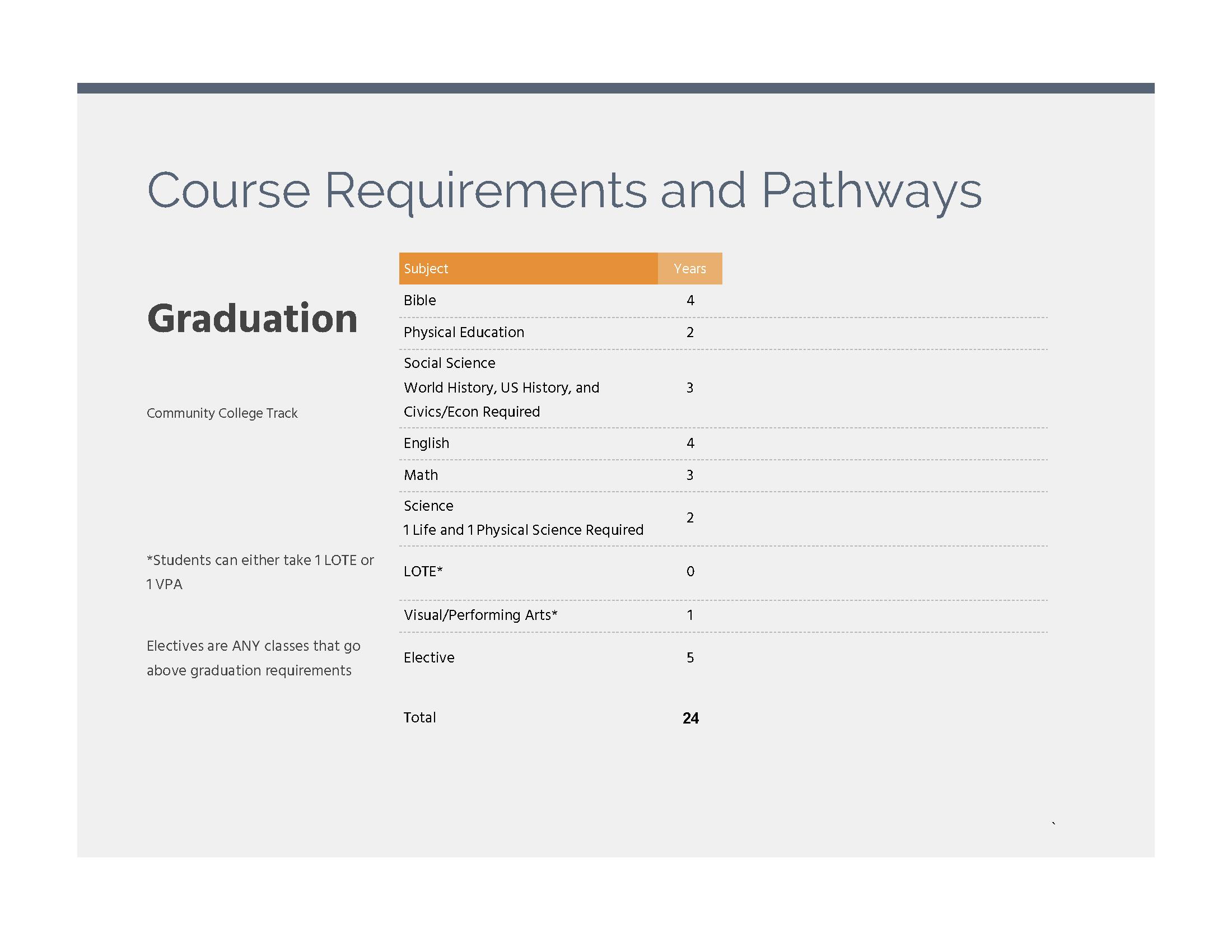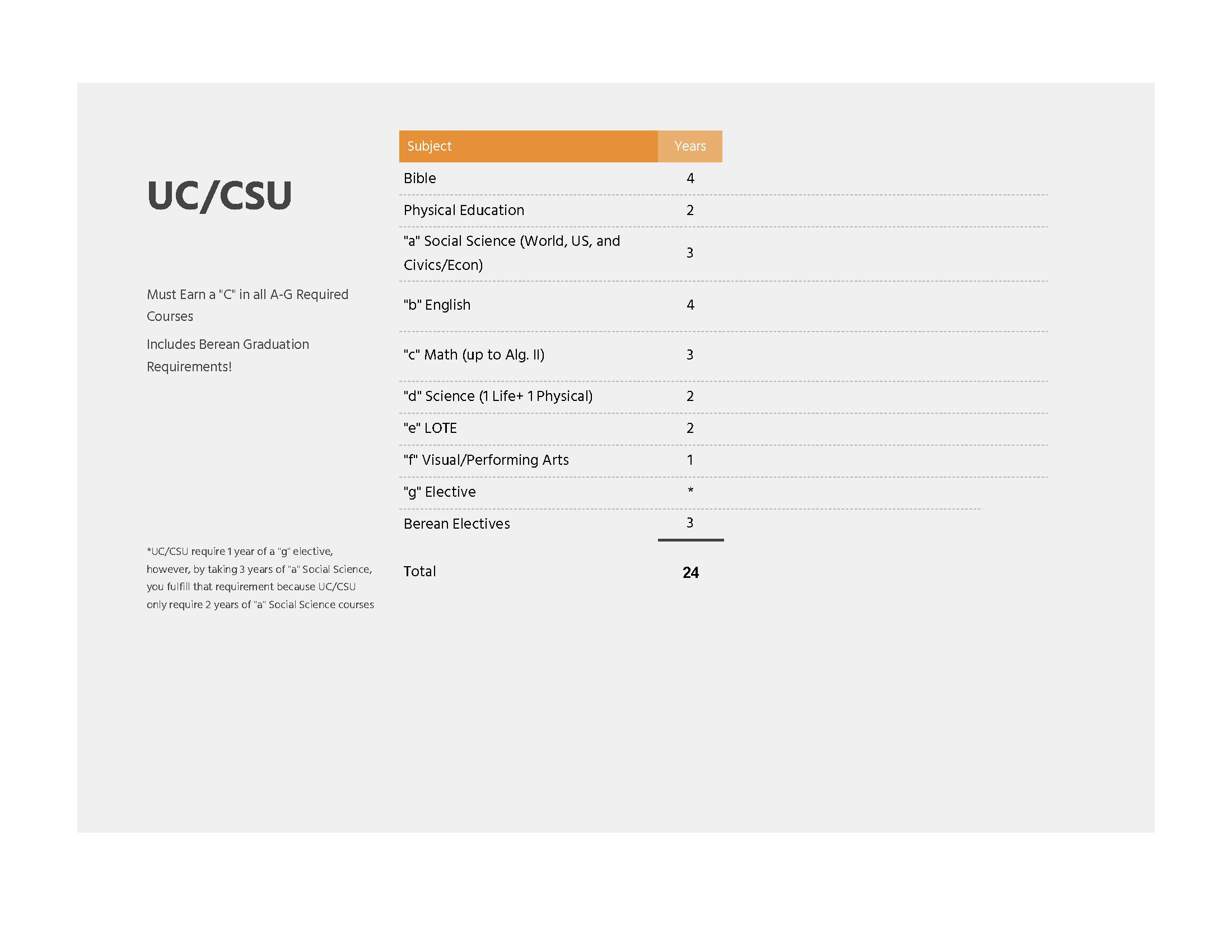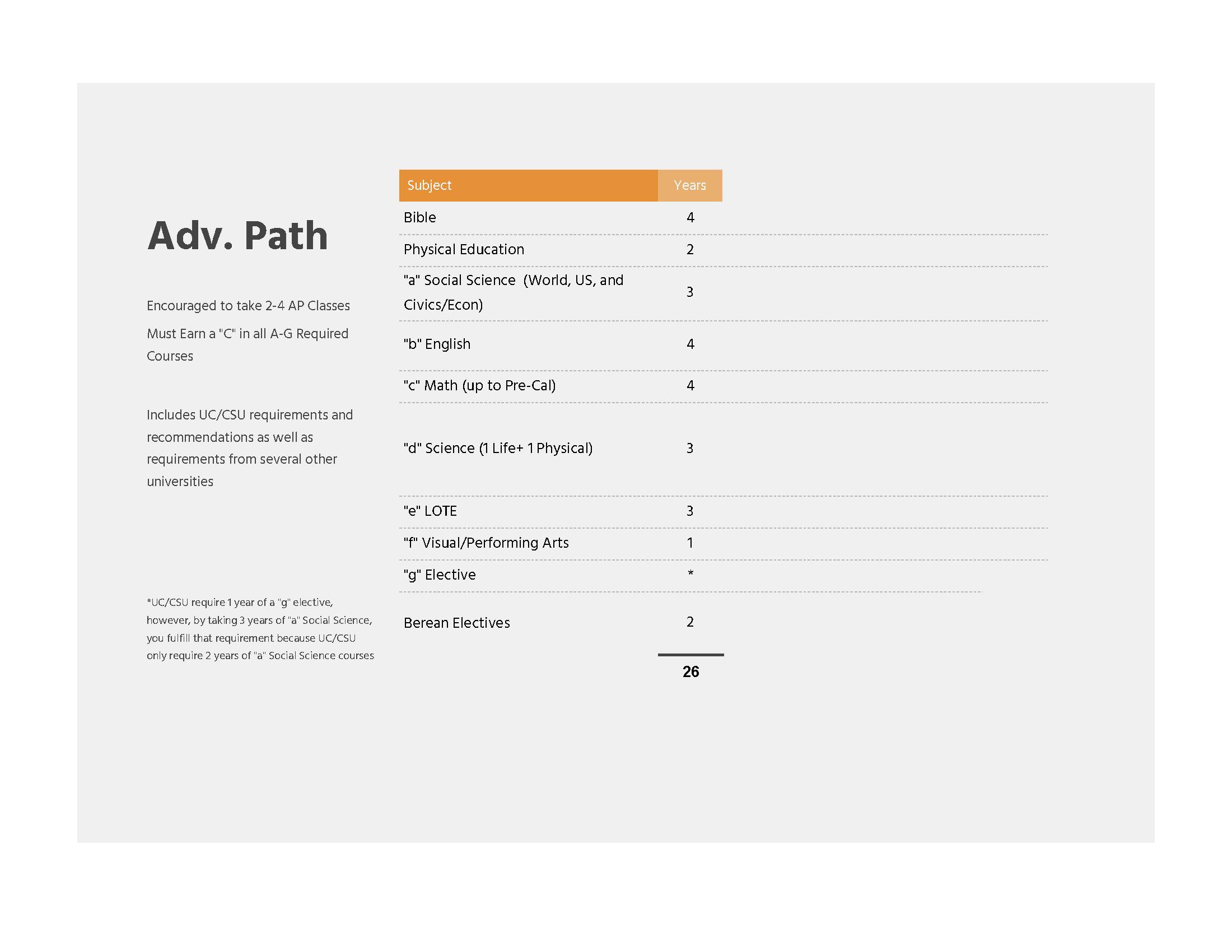- CCC Events
- California Scholarship Federation
- College Acceptances
- College Application Quick Links
- College & Career Links
- College Planning Timelines
- College Rep Campus Visit
- Course Planning
- Financial Aid and Scholarships
- Forms
- Jobs, Internships & Volunteer Opportunities
- Naviance
- Senior Information
- Testing and Tutoring
We're sorry, no events were found for this calendar.
Course Planning
Please complete and bring this worksheet to your course planning meeting with Miss Grieb. Students will be called out of class for course planning meetings.
Students are elligible to take courses outside of Berean at a community college while attending Berean. Please reveiw these Community College Coursework Guidelines.
This site provides information using PDF, visit this link to download the Adobe Acrobat Reader DC software.
.png?mask=1)




